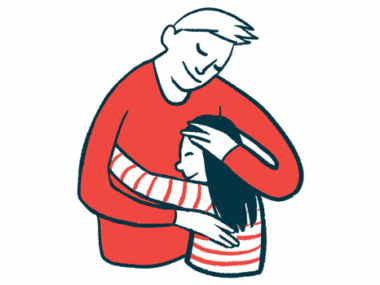Intravenous Vyvgart resolves MG crisis: Case study
Man in pneumonia-triggered crisis didn't respond to other treatments
Written by |
Intravenous (into-the-vein) treatment with Argenx’s Vyvgart (efgartigimod alfa) resolved a myasthenic crisis — a life-threatening complication of myasthenia gravis (MG) marked by severe breathing problems — in a 57-year-old man who had failed to respond to prior treatments, according to a case study.
The findings support the potential of intravenous Vyvgart “as a novel therapeutic option in the management of myasthenic crises, particularly in cases of refractory to conventional treatments,” the researchers wrote in the report, “Efgartigimod as Rescue Medication in a Patient with Therapy-Refractory Myasthenic Crisis,” published in Case Reports in Neurological Medicine.
MG is an autoimmune condition marked by a wrongful immune attack against proteins at the neuromuscular junction, which is the region where nerve cells and muscles communicate to coordinate movement. In most MG patients, the disease is caused by self-reactive antibodies targeting acetylcholine receptors (AChRs) on muscle cells, which respond to nerve signals sent to elicit muscle contraction.
While the main MG symptoms are muscle weakness and fatigue, respiratory muscles can also be affected, triggering a myasthenic crisis, or acute breathing problems that require hospitalization.
Vyvgart blocks a protein called neonatal Fc receptor (FcRn), which helps stabilize immunoglobulin G (IgG) antibodies. The self-reactive antibodies implicated in MG, including those targeting AChRs, belong to this antibody family. By blocking FcRn, Vyvgart is expected to accelerate the breakdown of the harmful antibodies that drive MG symptoms.
Man’s crisis triggered by pneumonia
Intravenous Vyvgart is approved in the U.S., Japan, and the European Union for adults with generalized myasthenia gravis (gMG), but whether it also shows therapeutic benefits in myasthenic crisis remains unknown.
Clinicians at Justus Liebig University in Giessen, Germany, reported the case of a 57-year-old man with gMG who was successfully treated with Vyvgart.
The man, positive for AChR-targeting antibodies, was transferred to the neurological intensive care unit due to progressive generalized weakness and difficulty swallowing and breathing.
His MG crisis had been triggered by pneumonia, which developed due to his swallowing difficulties. He had been treated with pyridostigmine (sold as Mestinon, among other brand names), an oral medicine often recommended as a first-line treatment for MG, and prednisone, a corticosteroid. But despite the treatment, his symptoms continued to worsen.
Upon admission, he was diagnosed with an MG crisis revealed by acute respiratory muscle weakness. His pyridostigmine treatment was switched from an oral to an intravenous route, along with prednisone treatment, and seven sessions of plasma exchange therapy, a type of blood-filtering treatment aimed at removing the self-reacting antibodies.
As his condition improved, he returned to oral pyridostigmine, and received immunosuppressant therapy with azathioprine (sold under several brand names). However, two weeks after his last plasma exchange session, his respiratory function and swallowing abilities started to deteriorate.
He was re-admitted to the neurological intensive care unit to receive an additional seven sessions of plasma exchange therapy and pyridostigmine intravenously.
But his condition deteriorated even faster, with symptoms returning three days after the last plasma exchange session.
Further investigation showed no signs of cancer or infection. The patient then started treatment with Vyvgart, administered at a dose of 10 mg/kg, after discussions regarding the pros and cons of the treatment. He continued treatment with intravenous pyridostigmine, along with oral prednisolone and azathioprine.
In total, he received four infusions of Vyvgart. Within 48 hours, he showed marked improvements.
He switched to oral pyridostigmine, and in the following weeks his condition continued to improve, as evidenced by an improvement in muscle strength and a reduction in the scores of two scales of disease severity, the Quantitative Myasthenia Gravis (QMG) score and the Myasthenia Gravis Activities of Daily Living (MG-ADL), and was transferred to a rehabilitation facility.
“This case highlights the need for continued exploration of new therapeutic avenues in the management of [MG crises], especially in the context of refractory [failure to respond to prior therapies] disease presentations,” the researchers wrote.







Leave a comment
Fill in the required fields to post. Your email address will not be published.